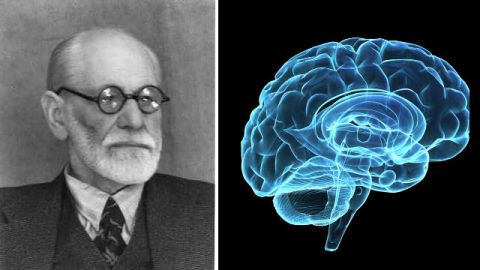A Biological Basis for the Unconscious?

What’s the Big Idea?
Today, the question of how people make decisions is an animated and essential one, capturing the attention of everyone from neuroscientists to lawyers to artists. In 1956, there was one person in all of New York known for his work on the brain: Harry Grundfest. An aspiring psychiatrist who was born in Austria in the 1930’s, Eric Kandel took an elective in brain science during medical school and found himself studying alongside Grudfest at Columbia University.
“What is it you want to study?” Grundfos asked Kandel. “I want to know where the id, the ego, and the super-ego are located in the brain,” Kandel replied. Grundfest looked at him as if he was crazy. “I haven’t got the foggiest notion whether these constructs exist,” he said. “But the way to approach the brain is to study it one cell at a time. Why don’t you study how the cells work?”
That’s exactly what Kandel did, earning a Nobel Prize in physiology/medicine in 2000 for his discoveries concerning signal transduction in the nervous system, which showed that memory is encoded in the neural circuits of the brain. But Kandel’s fascination with Freudian psychology remained a constant driving force throughout his career.
It wasn’t clinical practice or theory that interested him. He turned down a cushy position as chairman of the Department of Psychiatry at Harvard early in his career so that he could continue to work in the lab. There he discovered that learning gives rise to anatomical changes in the brain, inferring that psychoanalysis, if it was effective, must have lasting and structural effects on the brain. (This is what we mean we talk today about “rewiring” the brain.)
Recent studies by Helen Mayberg back up this conclusion. Through imaging, Mayberg found a particular area, Brodmann Area 25, that was hyperactive in the brains of patients who were depressed. After undergoing therapy, patients who reported a change in their symptoms showed a corresponding change in this abnormality.
Likewise, a famous 1971 experiment by Benjamin Libet shook up the scientific community by unearthing biological mechanisms that underlie decision-making, which has traditionally been seen as an abstract concept. Libet asked subjects to press a button wearing electrodes attached to their heads. Before they’d consciously decided to move their hand to press the button, an electrical potential appeared in their brains. “That means the decision was made unconsciously,” says Kandel. “Do you think Freud would have been surprised about that? He said from the very beginning, much of our mental life is unconscious.”
What’s the Significance?
To Kandel, the research reflects a larger truth: that consciousness and decision-making, what we know of as the human mind, arises in the brain: “All mental functions, from the most trivial reflex to the most sublime creative experience, come from the brain.”
People find reductionism threatening, he says, only if they perceive it as a challenge to their spirituality or humanist values. But reductionism is not inconsistent with either as a philosophy. As a “theory of everything,” it would be a failure. As a theory of biology, it’s been a resounding success.
When the English physician William Harvey was trying to understand how the body works, he found that the heart functioned not as the seat of the soul, but as a pump to move blood through the body. “Does that make it any less magical? Do I have less respect for your heart or my heart because I realize how it functions?” asks Kandel.
The answer is of course, no. The study of the brain is about adding another dimension to our understanding of human experience, not undermining the extraordinary complexity of human thought, creativity, and emotion. In that way, it’s a compelling example of our ability to reflexively know ourselves.





